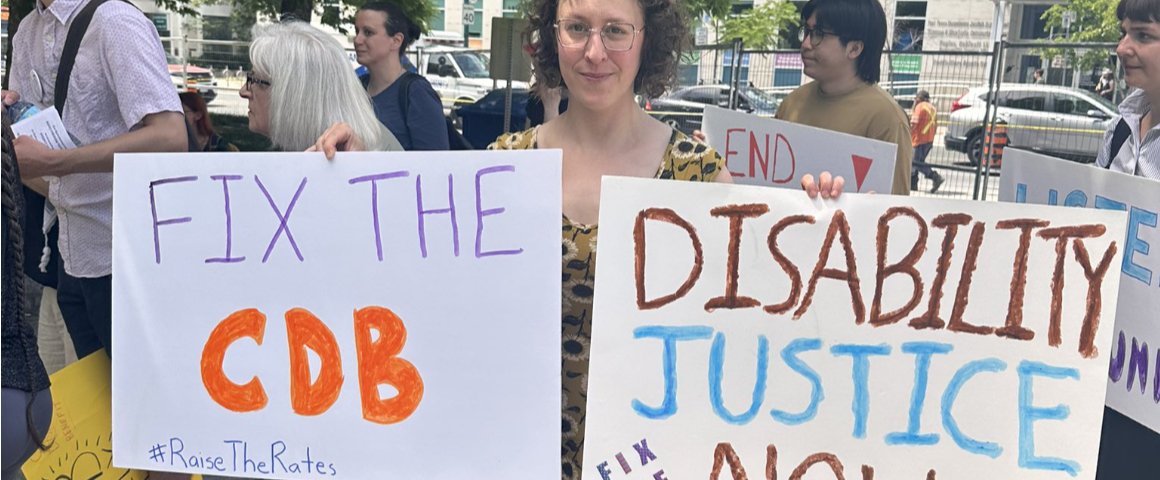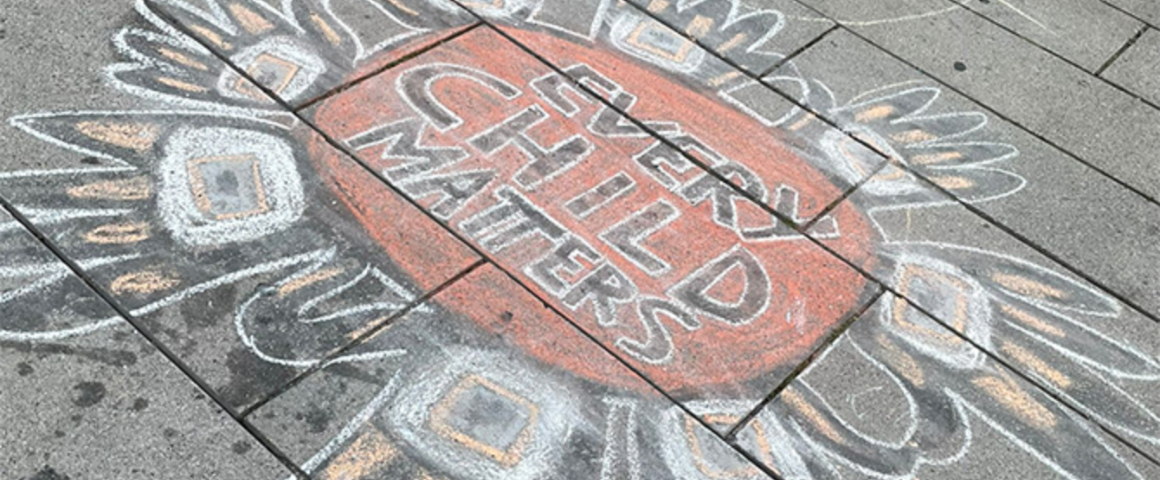By Jane McKenzie
The most recent data from Statistics Canada reports that, as of 2022, eight million people in Canada aged 15 and older have one or more disabilities that limit their daily activities. This is a near 5 percent increase from 2017 and represents increases in all provinces and most territories.
Over 1.5 million of those people live in poverty, with the most severe disabilities correlating to the deepest poverty, reports Disability Without Poverty.
It’s no wonder why. In Ontario, for example, nearly half a million beneficiaries receive the Ontario Disability Support Program which yields a paltry maximum of $1,368 per month for a single person.
Any working person experiencing record costs for rent, food and utilities can see that this rate is not meant to provide a dignified, sustainable life. It is a “payer of last resort” that provides the bare minimum support to incentivize full-time pursuit of income – even for those people who cannot, and may never be able to work.
For the last few years, there was cautious optimism that the Canada Disability Benefit (CDB), introduced in the 2020 Throne Speech, would provide a significant increase in income and quality of life for people with disabilities. In fact, the government billed it as such.
Shamefully, multi-partisan support of the latest federal budget made it clear that no major political party will deliver on this promise: the CDB as proposed will provide a maximum of $2,400 per year to recipients.
Trevor Manson, Co-Chair of the ODSP Action Coalition, says this is obviously not enough. “Two hundred dollars – sure, every bit helps but from the onset, when [the CDB] was first uttered in 2020, they said it would finally lift disabled people out of poverty – $200 doesn’t lift a single person out of poverty.” Social assistance rates across the country are so far below the poverty line that $200 is a drop in the bucket. “Maybe you can get a few more groceries.”
Manson has been an ODSP recipient since 2016. Before he became disabled, he did “all the things you’re supposed to do” by working full-time, saving money and planning for a far-away retirement. After becoming unable to work, he eventually applied for ODSP and was told he had too much money in the bank.
“At the time, the ODSP asset limit was $5,000.” Manson was understandably livid. By that point he had already been burning through his modest savings, only to learn that “I had to get rid of all my money to qualify for a program that doesn’t provide enough money on which to survive.”
The asset limit has since been raised to $40,000, because of advocates like Manson. This experience is emblematic of a social assistance system that drives its recipients to poverty, keeps them poor, and demands they jump through burdensome bureaucratic hoops for the privilege.
“I couldn’t afford where I live if I moved in today, and I wouldn’t be accepted as a tenant based on my current income.”
Disability advocates and their allies across the country have been consulting on the Canada Disability Benefit since it was proposed. Manson has participated through numerous technical roundtables, focus groups and written consultations. “I watched all of the committee hearings through HUMA, the Standing Committee on Human Resources, Skills and Social Development and the Status of Persons with Disabilities, and SOCI, the Standing Senate Committee on Social Affairs, Science and Technology, and through all of those, nobody suggested this [$200 monthly] rate. Perhaps more importantly, nobody suggested the Disability Tax Credit should be used as a gateway; in fact, I heard several people actually specify not to use it.”
This spring, through the federal budget, the government revealed critical details regarding the CDB, including enrolment in the Disability Tax Credit as the only way to qualify. Advocates uniformly condemn this approach. The tax credit is non-refundable, meaning it can only reduce the amount of income tax one pays, which is irrelevant to people whose income is so low that they pay little to no income tax anyway. It’s expected that only 40 percent of people with disabilities will actually qualify for the benefit.
The provincial vetting processes for receiving disability benefits are already so stringent that there is certainly no need for an even bigger administrative burden for would-be recipients. “There are people panicking about applying for the tax credit who should have proxy eligibility – none of these [provincial] programs are easy to qualify for, despite whatever perceptions might be out there. It took me nine months from the start of my application process to receiving my first ODSP cheque, and from my understanding that’s relatively fast.”
The Canada Disability Benefit as it exists now is a cynical co-opting of the principle “nothing about us, without us.” People with disabilities have participated in consultations, advocated and organized for effective poverty reduction measures, only to be ignored and used as cover for a program that will keep people poor, while allowing the political elites to pat themselves on the back.
“The situation is dire, and people are fighting for their lives. When you pay your rent and you have $40 to last the rest of the month,” says Manson. “No one is just sitting around at home – they’re going to food banks or meal programs, trying to figure out how the hell to make it through the day. You’re not thinking about tomorrow.”
In spite of this grim reality, Manson speaks about the strong network of people across the country who continue to speak out for justice for people with disabilities. “What else can we do? Educate, demonstrate and advocate.” The government is soliciting feedback on the CDB implementation framework until September 23.
Disability advocates have played a leading role in building and protecting the social safety net in Canada for decades. The fightback against social assistance rate cuts were one of the leading struggles against Ontario’s Conservative Mike Harris government during the “Days of Action” in the 1990s.
The fight for an adequate Canada Disability Benefit is a bellwether for the cost-of-living crisis facing the working class in Canada. Increasing numbers of people in Canada are choosing between rent, food and the other necessities of life, while all levels of government subsidize corporate profits.
Today, the labour and people’s movements will be well-served by maintaining and strengthening coalitions with disability advocates, as they have in the past.
Support working-class media!
If you found this article useful, please consider donating to People’s Voice or purchasing a subscription so that you get every issue of Canada’s leading socialist publication delivered to your door or inbox!
For over 100 years, we have been 100% reader-supported, with no corporate or government funding.




